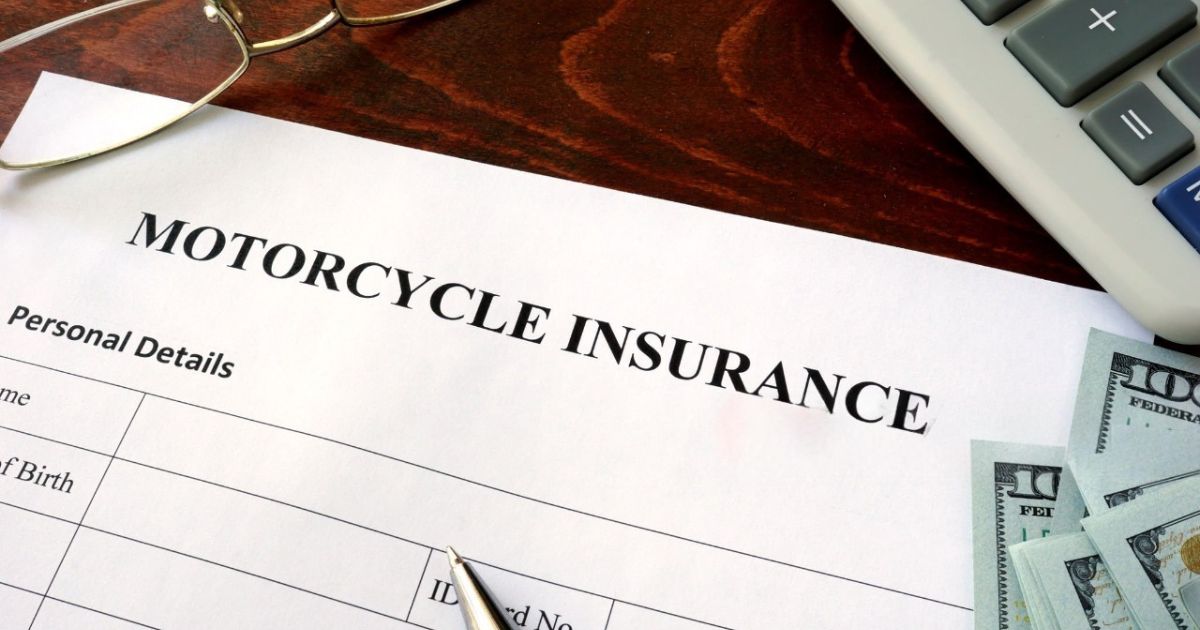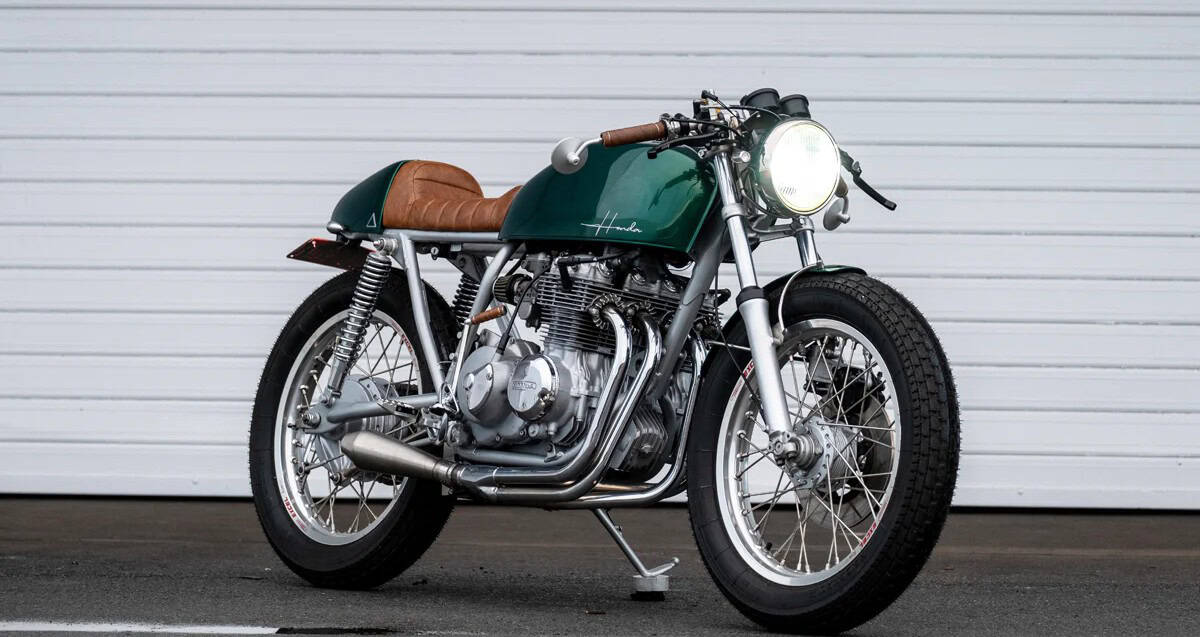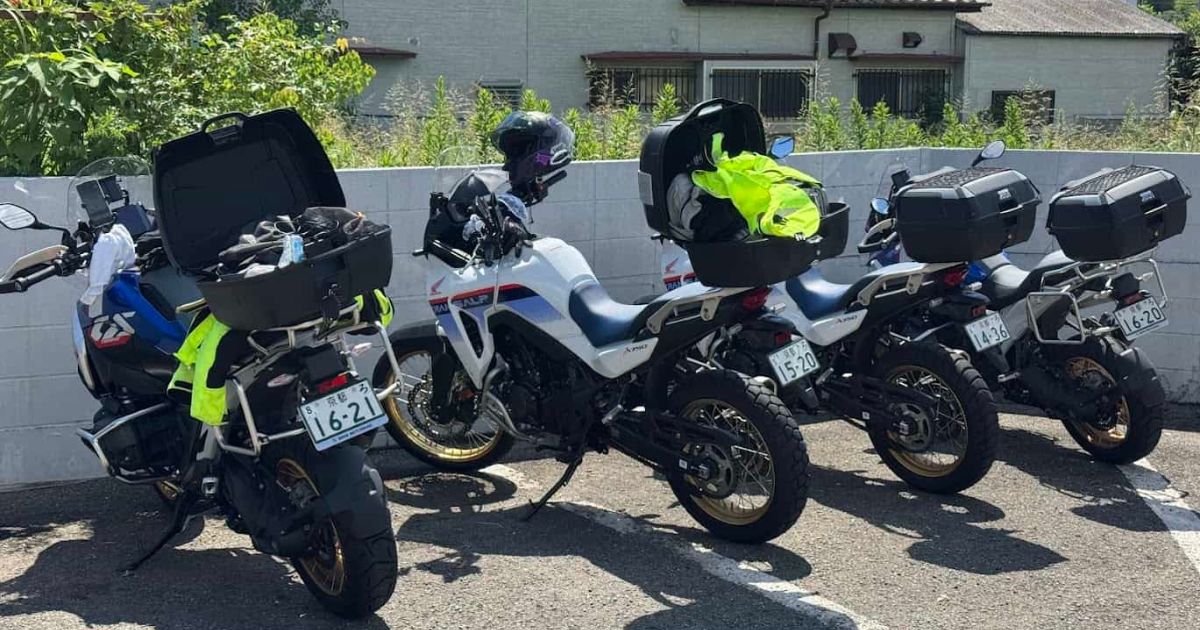
Best Motorcycle Insurance: Coverage, Value & Peace of Mind
left for contents
Finding the best motorcycle insurance shouldn’t feel like decoding legal jargon. Riders don’t want slogans — they want real coverage that fits how and what they ride.
Below, you’ll find the best motorcycle insurance setups for every type of rider — commuters, sport bikers, tourers, cruisers, and beginners — with recommended coverage, cost-saving tips, and trusted providers that actually deliver when things go sideways.
The table below shows the top motorcycle insurance recommendations by rider type, with the right coverage, savings strategies, and trusted providers — each explained in detail later in this guide.
Best Motorcycle Insurance by Rider Type (2025)
| Rider Type | Recommended Coverage Setup | Ideal Budget Strategy | Why It Works | Best Provider |
|---|---|---|---|---|
| Daily Commuter | High liability, collision, comprehensive, UM/UIM | Bundle with auto/home; raise deductible to $750–$1,000 | Protects against rush-hour collisions, parking lot scrapes, and theft | Progressive – commuter bundles |
| Sport Rider | Full coverage with high liability + MedPay/PIP | Take safety course; add accessory coverage; raise deductible | Shields against theft, slides, and high repair costs | GEICO – sport bike coverage |
| Touring Rider | Full coverage with trip interruption + roadside + UM/UIM | Loyalty and mileage discounts; bundle policies | Covers long trips, passengers, and breakdowns far from home | Nationwide – touring protection |
| Cruiser / Weekend Rider | Moderate liability + comprehensive; optional collision | Use pay-per-mile plan (VOOM); raise deductible | Saves money on low-mileage bikes while protecting against theft | VOOM – pay-per-mile |
| Beginner Rider | Higher liability + optional collision + UM/UIM + basic MedPay | Complete MSF course; start with smaller bike | Full protection while learning without overspending | Dairyland – beginner friendly |
What Does “Best Motorcycle Insurance” Actually Mean?
When riders toss around phrases like “best motorcycle insurance,” they often mean very different things. Best in this context isn’t a trophy you hand to one company—it’s a combination of three qualities:
- Coverage: Does the policy protect you from the risks you actually face? A bare‑bones plan might meet state minimums, but it won’t help if your bike is stolen or if a driver without insurance hits you.
- Value: Are you paying for features you’ll never use? Conversely, could a small premium increase save you thousands after a crash? The best motorcycle insurance delivers value relative to the cost.
- Reliability: How smoothly are claims handled? Does the insurer respond quickly, have solid financial backing and treat riders fairly? Cheap insurance that leaves you hanging during a claim isn’t a bargain.
For a deeper dive into what riders really pay for motorcycle insurance—and how bike type and mileage affect rates—see How Much Is Motorcycle Insurance? Real Costs & Tips on our site.
Fit Matters More Than Fame
Motorcycle insurance isn’t one‑size‑fits‑all. A daily commuter weaving through city traffic has different needs than someone who breaks out the cruiser on sunny weekends. Custom touring rigs with thousands of dollars in add‑ons require broader coverage than a stock commuter bike. Instead of fixating on brand rankings, think about your riding habits, the value of your bike and what keeps you up at night. The sections below break down the major coverage types and explain how to mix and match them.
Essential Motorcycle Insurance Coverages
Liability Insurance – Your Legal and Moral Minimum
Liability insurance covers damages you cause to other people and property. Every state (except Florida for some small bikes) requires a minimum amount of bodily injury and property damage liability. Bodily injury liability helps pay the other party’s medical bills and legal fees if you’re at fault. Property damage liability covers repairs to someone else’s vehicle, fence or storefront that you damaged.

State minimums are often low (think $25k–$50k per person), so many experienced riders choose higher limits to avoid paying out of pocket after a serious crash. Liability doesn’t pay for your injuries or your bike—it exists to protect others and to shield you from lawsuits.
Collision Coverage – Repair or Replace Your Bike
Collision coverage pays to repair or replace your motorcycle if you collide with another vehicle or object. It doesn’t matter who is at fault. Collision coverage usually carries a deductible (an amount you pay before insurance kicks in). Riders with newer or financed bikes often need collision coverage to satisfy lenders or to protect their investment. If you ride an inexpensive bike you could afford to replace, you might skip collision to save money—just make sure you’d be comfortable walking away from that bike if it gets totaled.
Comprehensive Coverage – Protection Beyond the Road
Comprehensive coverage steps in when damage isn’t caused by a collision. Think theft, vandalism, fire or weather. A hailstorm denting your fuel tank, a wildfire sweeping through your garage or a thief making off with your sport bike are all comprehensive claims. Comprehensive policies typically have a deductible and are especially valuable for high‑end or custom machines. If you live in an area with extreme weather or high theft rates, comprehensive is more than optional—it’s essential.
Uninsured/Underinsured Motorist Coverage (UM/UIM) – Guarding Against Others’ Shortfalls
Even though liability insurance is mandatory in most states, many drivers hit the road without it or carry only the bare minimum. Uninsured/underinsured motorist coverage covers your medical bills and sometimes bike repairs when you’re hit by a driver with no insurance or too little coverage (freedominsurancenc.com). It can also protect you in a hit‑and‑run. If you regularly ride in congested cities or states with lots of uninsured drivers, UM/UIM is a wise investment.

Medical Payments and Personal Injury Protection – Covering You and Your Passenger
Medical payments (MedPay) coverage helps pay medical expenses for you and your passenger regardless of who is at fault (freedominsurancenc.com). It’s usually available in smaller limits ($1,000–$10,000) and can complement your health insurance by covering deductibles or co‑pays.
Personal injury protection (PIP) goes further: in addition to medical bills, it may cover lost wages, rehabilitation, essential services (like childcare) and funeral expenses. PIP is required in no‑fault states and optional or unavailable elsewhere. Some insurers don’t offer PIP for motorcycles at all, so check your state rules. If you don’t have good health insurance, MedPay or PIP can be a lifesaver after an accident.
Roadside Assistance – Rescue When You’re Stranded
Roadside assistance isn’t part of standard coverage, but it can turn a bad day into a minor inconvenience. Typical services include towing your bike to the nearest shop, help with flat tires, jump‑starting a dead battery, fuel delivery and minor mechanical adjustments. Policies vary on how far they’ll tow you and whether they’ll take you to your preferred shop or just the closest one. For a few dollars a month, roadside assistance can be worth it if you ride frequently or venture far from home. (thecareyagency.com)
For an in-depth look at breakdown and roadside coverage for motorcycles, check out our article on Motorcycle Breakdown Insurance.
How to Choose the Right Coverage for Your Riding Style
Your ideal coverage mix depends on how and where you ride. Below are general guidelines—feel free to adjust them based on your budget and risk tolerance.
Daily Commuter
If you ride to work or school through busy streets, you’re exposed to dense traffic and unpredictable drivers. A commuter’s priority is staying on the road without financial surprises.

- Liability: Carry more than the state minimum; city crashes can involve expensive vehicles and medical bills.
- Collision and Comprehensive: Recommended, especially if your bike is newer. Rush‑hour fender‑benders and parking lot mishaps are common.
- UM/UIM: Highly recommended for protecting yourself against uninsured drivers.
- MedPay/PIP: Consider a basic MedPay limit to cover deductibles; PIP if available in your state.
- Optional add‑ons: Roadside assistance can be handy if you hit potholes or get a flat on the way to work. Accessory coverage may not be necessary unless you’ve upgraded your commute bike.
Sport Rider
Sport bikes are built for performance and often see spirited riding. Because speeds are higher, accidents can be more severe. Sport riders also tend to customize their machines.
- Liability: Opt for higher limits because injuries can be serious at speed.
- Collision: Essential to repair your bike after a slide or high‑side.
- Comprehensive: Necessary; sport bikes attract thieves and cost a lot to replace.
- UM/UIM: Strongly recommended.
- MedPay/PIP: Consider higher limits for potential injuries.
- Optional add‑ons: Accessory and custom parts coverage to protect aftermarket exhausts, suspension, carbon fiber bodywork and performance mods. Roadside assistance can be useful if you ride in rural twisties. Some insurers offer track‑day coverage—if you take your bike to the track, ask about this specifically as most policies exclude closed‑course riding.
Touring Rider
Touring riders log serious miles and often carry luggage or ride two‑up. Long trips expose you to weather changes, mechanical failures and nights on the road.
- Liability: Adequate limits, especially if you carry a passenger.
- Collision and Comprehensive: Essential; repairs far from home can be costly.
- UM/UIM: Highly recommended; an accident in a different state could be complicated.
- MedPay/PIP: Consider higher limits to cover both rider and passenger.
- Optional add‑ons: Roadside assistance is a must; towing your big touring bike can be expensive. Trip interruption coverage reimburses lodging, food and transportation if your bike breaks down or is damaged far from home. Accessory coverage protects saddlebags, GPS units and custom seats. Total loss replacement can be helpful for newer touring rigs so you’re not left with depreciated value after a total loss (rockinsurancevermont.com).
Cruiser or Weekend Rider
Cruisers are often customized showpieces and ride mostly on weekends. Mileage is low, but parts and paint jobs can be expensive.
- Liability: Don’t skimp; accidents can happen even on leisure rides.
- Collision and Comprehensive: Recommended to protect against hit‑and‑run and theft.
- UM/UIM: Good idea since weekend traffic might include distracted tourists.
- MedPay/PIP: A basic MedPay limit should suffice.
- Optional add‑ons: Accessory and custom parts coverage is a must for chrome, leather bags and custom paint. Pay‑per‑mile programs like VOOM (discussed later) can make sense because you ride less. Roadside assistance is handy if you’re far from services on scenic routes.

Beginner Rider
New riders are still building skills, and statistically, they’re at a higher risk of accidents. Budgets can be tight, but skimping on coverage is risky.
- Liability: Choose higher limits than the minimum; mistakes happen.
- Collision and Comprehensive: Worth having on bikes you can’t afford to replace. Used beginner bikes might not need full coverage if you can walk away from them.
- UM/UIM: Highly recommended; a hit‑and‑run would be financially devastating when you’re starting out.
- MedPay/PIP: Consider including to cover injuries until you learn the ropes.
- Optional add‑ons: Roadside assistance can be a confidence booster. Look for insurers that offer discounts for completing rider safety courses—it can offset the cost of coverage.
Optional Coverage That Can Be Worth It
Beyond the basics, several optional coverage types can make a world of difference. Choosing them depends on how much you value convenience, peace of mind and protecting your investment.
Roadside Assistance
As mentioned, roadside assistance helps when your bike leaves you stranded. Coverage typically includes towing, flat‑tire help, battery jump‑starts, fuel delivery and minor mechanical repairs. Some policies limit the distance your bike can be towed or only cover one service call per year. Cost varies by insurer and coverage level (thecareyagency.com).
Accessory and Custom Parts Coverage
Standard policies usually cover only a small amount of aftermarket gear—if they cover it at all. Accessory coverage pays for non‑factory additions like custom seats, luggage, windshields, paint, lighting and performance parts. If you’ve invested in upgrades, check the dollar limit; you may need to purchase extra protection to fully cover custom parts.

Trip Interruption Coverage
Trip interruption coverage reimburses you for lodging, meals and transportation if your bike is disabled far from home. Touring riders find this invaluable. Policies vary on how far from home you must be for coverage to kick in—commonly 100 miles—and what expenses are eligible. Some policies cover only breakdowns; others include accidents. If you like multi‑state road trips, trip interruption coverage can turn a trip‑stopping breakdown into a hotel stay instead of a roadside nightmare.
Total Loss Replacement
When your bike is declared a total loss, most policies pay actual cash value (ACV)—what your motorcycle was worth at the time of the loss. This can be significantly less than what you paid, especially for new models. Total loss replacement coverage pays to replace your bike with a new one of the same or similar model within a set time period (often two or three model years). It’s ideal for new bikes that depreciate quickly.
Coverage for Protective Gear
Some insurers offer coverage for helmets, riding suits and other safety gear. Replacing a helmet after a crash can cost hundreds of dollars. If your gear collection is extensive, ask about adding this protection.
How to Compare Motorcycle Insurance Quotes
Shopping for the best motorcycle insurance is more than comparing monthly premiums.

Here’s how to make apples‑to‑apples comparisons and avoid surprises:
- Match Coverage Types and Limits: When requesting quotes, ensure each insurer provides the same liability limits, deductibles and optional coverages. Comparing a bare‑bones policy to a full‑coverage policy isn’t helpful. For smart ways to save safely on your premium without sacrificing critical coverage, see our article Cheap Motorcycle Insurance: Smart Ways to Save Safely.
- Examine Deductibles: Higher deductibles lower premiums but increase out‑of‑pocket expenses. Choose deductibles you could comfortably pay after an accident.
- Ask About Exclusions: Some policies exclude track days, off‑road use, non‑factory turbos or unlicensed riders. Others cap coverage for accessories or require you to list them separately.
- Consider Actual Cash Value vs. Agreed Value: ACV pays the depreciated value of your bike. Agreed or stated value policies let you set a payout amount, which can benefit owners of custom or vintage bikes.
- Look for Discounts: Completing an approved rider safety course, bundling policies (auto and home), installing anti‑theft devices, owning multiple bikes or belonging to a motorcycle association can lower your premiums. Ask each insurer to apply all applicable discounts.
- Read Reviews and Check Complaints: Customer reviews and complaint ratios can shed light on how insurers handle claims. A cheap premium doesn’t matter if claims are denied or delayed.
- Review Payment Options: Some companies charge fees for monthly payments. Paying in full or setting up automatic withdrawals may save money.
What to Look for in a Motorcycle Insurance Company
Coverage is only as good as the company standing behind it.

Consider these factors when evaluating insurers:
- Financial Strength: Look up third‑party ratings (A.M. Best, Moody’s, Standard & Poor’s). Strong financial ratings indicate the company can pay claims even during widespread disasters.
- Claims Process: Ask how claims are filed and resolved. Is there a dedicated motorcycle claims team? Are representatives available 24/7? Do they offer online claims tracking?
- Customer Service: Responsive, rider‑friendly service matters. Local agents who understand motorcycles can help you fine‑tune coverage and support you after a crash.
- Coverage Options: Good insurers offer flexible limits and optional coverages like accessory protection, total loss replacement and trip interruption. If you ride multiple types of bikes, look for insurers who insure touring bikes, sport bikes and dirt bikes under one policy.
- Discounts and Programs: Check for multi‑policy, multi‑bike, safe‑rider and loyalty discounts. Some companies reward low‑mileage riders or those who install anti‑theft devices.
- Policy Flexibility: Can you adjust coverage mid‑term without penalties? Are there cancellation fees? Flexible policies let you dial coverage up or down as your circumstances change.
When Specialized Programs Make Sense
Standard policies work for most riders, but specialized programs can offer significant savings or benefits in certain situations.
VOOM Motorcycle Insurance
VOOM’s pay‑per‑mile program is a prominent example of usage‑based insurance. Traditional policies charge a flat annual premium regardless of how much you ride. VOOM flips the model: you pay a low base rate plus a per‑mile fee. Because there’s no tracking device, you simply snap a photo of your odometer using the VOOM app.

Riders can save up to 60% compared with conventional policies, making the program ideal for low‑mileage riders, multi‑bike owners or seasonal cruisers. VOOM partners with established carriers for underwriting, so you’re not sacrificing financial strength. If you ride infrequently—say, only on weekends or during certain months—pay‑per‑mile insurance can be one of the best motorcycle insurance options for your budget.
Want to see how pay-per-mile works in action across multiple bikes? Check out our article, Motorbike Multi Bike Insurance: Why Pay-Per-Mile Wins.
Other Usage‑Based Programs
Several insurers offer telematics or usage‑based discounts, where your premium is adjusted based on mileage or riding behaviors (acceleration, braking, speed). These programs often involve a smartphone app or plug‑in device. If you’re a safe, low‑mileage rider, usage‑based options can reduce premiums. However, heavy riders or those who enjoy spirited riding may not benefit. Make sure you’re comfortable with the data being collected before enrolling.
Specialty Coverage for Custom or Vintage Bikes
If you own a vintage café racer or a heavily modified chopper, consider an agreed value or stated value policy. These policies allow you and the insurer to agree on the bike’s value up front, ensuring you’ll receive that amount if the bike is stolen or totaled. Standard policies that use ACV might not reflect the true worth of a custom build.

Buying Guide: How to Find the Best Motorcycle Insurance for You
The path to the best motorcycle insurance starts with self‑assessment and ends with confidence that your policy fits like a well‑broken‑in jacket. Here’s a step‑by‑step roadmap:
- Assess Your Riding Style and Risk: Are you commuting daily, carving canyons, crossing states or cruising on Sundays? How many miles do you ride each year? Do you carry passengers? The more you know about your habits, the better you can tailor coverage.
- Calculate Your Bike’s Value: Consider the current market value of your motorcycle and any accessories. Decide whether you could afford to replace the bike out of pocket. If not, collision and comprehensive become more critical.
- Choose Core Coverages: At minimum, pick liability limits that protect your assets. Add collision and comprehensive based on the bike’s value and how you’d cope with a total loss. Evaluate UM/UIM based on state uninsured‑driver rates. Select MedPay or PIP to cover medical expenses if your health insurance has gaps.
- Select Optional Coverages Wisely: Decide if roadside assistance, trip interruption, accessory coverage, total loss replacement, gear coverage or pay‑per‑mile programs align with your needs. Remember that optional add‑ons are inexpensive relative to the benefits they provide.
- Gather Quotes: Use online quote tools or contact agents. Provide consistent information to each insurer. Ask about available discounts and safety‑course credits.

- Ask the Right Questions: When reviewing quotes, ask: How are custom parts covered? What’s the total payout if my bike is totaled? Are there mileage restrictions? Is passenger coverage included? How long does claim settlement typically take? Are there fees for canceling or changing coverage mid‑term?
- Check Company Reputation: Read reviews, consult rider forums and look up complaint ratios from state insurance departments. A policy is only as good as the company behind it.
- Read the Policy: Before signing, read the policy documents. Pay attention to exclusions, coverage limits and definitions. If anything is unclear, ask the agent for clarification.
- Review Annually: Your needs change. Review your policy at least once a year, or after buying a new bike or moving to a different state. As your riding evolves from beginner to seasoned tourer, adjust your coverage to match.
Final Thoughts
Choosing the best motorcycle insurance isn’t about handing a gold medal to one company. It’s about finding a policy that matches your riding style, protects your investment and fits your budget. By understanding core coverages, tailoring optional features and comparing quotes thoughtfully, you’ll ride with the confidence that comes from knowing you’re truly protected.
Whether you log thousands of miles each year or savor occasional weekend cruises, the right coverage turns unknown roads into endless possibilities. Ride smart, ride insured and remember—peace of mind is the ultimate upgrade.
Related

Cheapest Full Coverage Motorcycle Insurance for Riders
Learn how to get the cheapest full coverage motorcycle insurance, cut premiums with smart discounts, and protect your ride without overspending.


